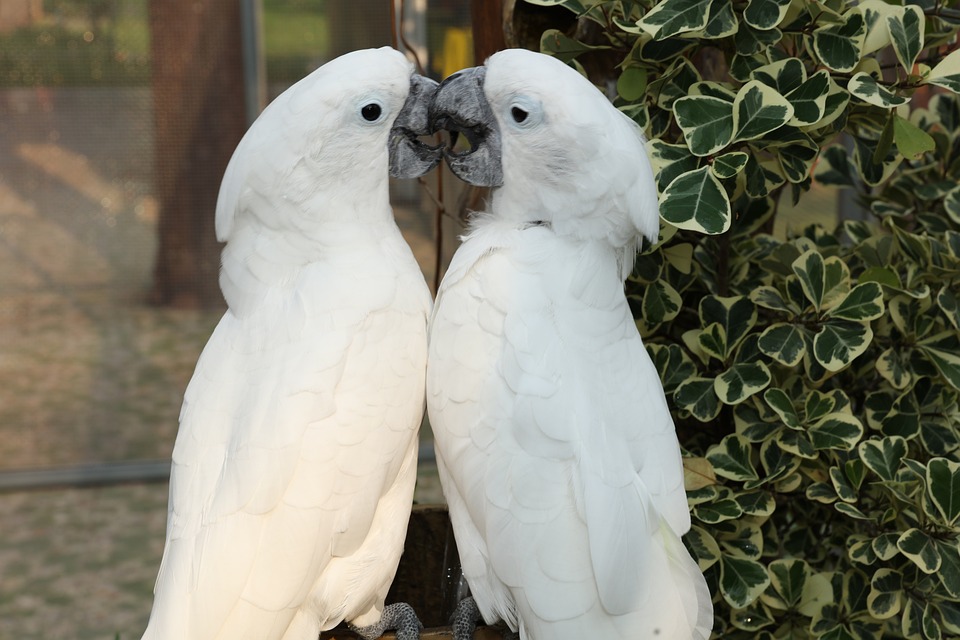Parrots are intelligent and social creatures that thrive on stimulation and interaction. As a parrot owner, it is important to understand and recognize signs of excitement and playfulness in these beautiful birds. By doing so, you can ensure your parrot’s well-being and provide them with a fulfilling and enriching environment. In this article, we will discuss various behaviors and body language cues that indicate excitement and playfulness in parrots.
Understanding Body Language
Parrots communicate primarily through body language, and by observing their behavior, you can gain valuable insights into their emotional state. Here are some common signs of excitement and playfulness that parrots may exhibit:
1. Tail fanning: When a parrot fans out its tail feathers, it is often a sign of excitement. This behavior is usually accompanied by a raised head and an alert posture.
2. Wing-flapping: Parrots may engage in wing-flapping, which involves rapidly moving their wings up and down. This behavior is often observed during play or when they are anticipating something exciting.
3. Head-bobbing: When a parrot bobs its head rhythmically, it is expressing enthusiasm or anticipation. Head-bobbing is commonly seen when parrots are engaging in playful activities or when they are happy to see their owners.
4. Preening: Parrots are meticulous groomers, and preening is an essential part of their daily routine. However, when a parrot becomes excited or playful, their preening behavior may become more vigorous and animated.
5. Chirping and vocalizations: Parrots are known for their ability to mimic sounds and vocalize. When they are excited or playful, they may produce a variety of chirps, squawks, and other vocalizations. These sounds are often accompanied by animated body movements.
Playful Behaviors and Activities
Parrots have a natural inclination for play, and engaging them in various activities can stimulate their minds and provide them with much-needed entertainment. Here are some playful behaviors and activities commonly observed in parrots:
1. Toy interaction: Parrots enjoy playing with toys that offer mental and physical stimulation. Providing them with a variety of toys, such as puzzle toys, chew toys, and foraging toys, can keep them engaged and entertained.
2. Feather play: Parrots are fascinated by feathers, and they often exhibit playful behavior when presented with feathers or feathered toys. They may toss, chase, or nibble on feathers, showcasing their playful side.
3. Dancing and swaying: Parrots are natural performers and may display their excitement through dancing and swaying movements. This behavior is often accompanied by vocalizations and is a clear indication of their playful mood.
4. Interactive games: Playing interactive games with your parrot, such as peek-a-boo or hide-and-seek, can be a great way to bond and stimulate their playful instincts. These games encourage mental engagement and provide a positive outlet for their energy.
Frequently Asked Questions (FAQs)
Q: How can I differentiate between excitement and aggression in my parrot?
A: While excitement and aggression may sometimes display similar behaviors, there are key differences to look out for. Aggression is usually accompanied by a tense body posture, raised feathers, dilated pupils, and aggressive vocalizations. Excitement, on the other hand, is characterized by a more relaxed body posture, animated movements, and playful vocalizations.
Q: What should I do if my parrot becomes overly excited or displays excessive playfulness?
A: It is important to provide a balanced environment for your parrot, ensuring that they have ample opportunities for both play and rest. If your parrot becomes overly excited or exhibits excessive playfulness, try redirecting their energy towards appropriate toys and activities. Offering calming activities, such as gentle music or providing a quiet space, can also help them relax.
Q: Are there any signs that indicate my parrot’s playfulness is turning into aggression?
A: Yes, there are certain signs that may indicate a transition from playfulness to aggression. These signs include aggressive biting, lunging, hissing, or persistent chasing. If you notice these behaviors, it is crucial to consult with an avian behaviorist or a veterinarian experienced with parrots to address the issue promptly.
By understanding and recognizing signs of excitement and playfulness in your parrot, you can foster a stimulating and positive environment for them. Always remember to observe their body language, provide them with appropriate toys and activities, and seek professional help if needed. With proper care and attention, you can ensure your parrot’s well-being and enhance their overall quality of life.









